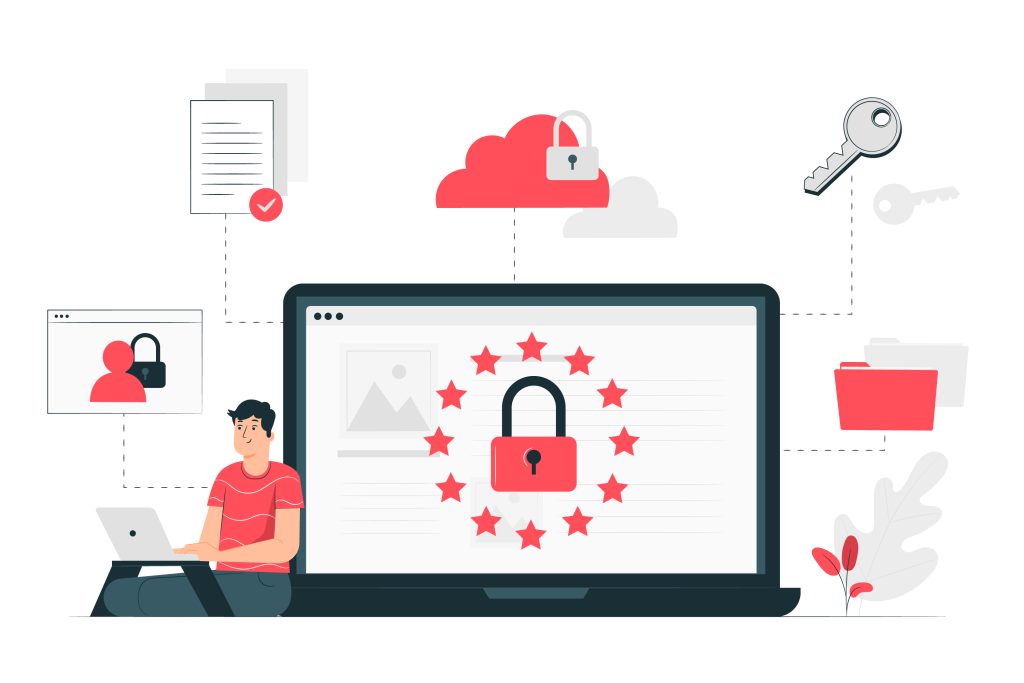Business owners can take charge by holding quarterly reviews. A quarterly business review (QBR) entails an evaluation of performance and achievements over the previous three months. Regular assessments like QBRs can help companies stay aligned with their goals to meet deadlines. Reviews help businesses derive insights and set targets according to the existing budget and priorities. And by staying on track of your accomplishments, you can add value to your business.
If you notice a dip in performance, you can immediately re-evaluate current strategies to prevent disruptions in growth over the next quarter. Helping everyone across the organization stay informed about overall business performance also encourages employees to lay down goals to help achieve annual objectives and key results (OKRs).
In planning for a review, it’s important to collect the right information—the kind that can help you discover actionable insights. Let’s take a look at the steps to help you effectively carry out a quarterly review:
Organize company-wide audits
One of the top benefits of an internal audit is to consolidate information about your capital utilization and expenses. For companies managing hundreds of assets, maintain a usage trail for each asset throughout the year. And it becomes a nearly impossible task to accomplish manually when asset numbers go into the thousands. An asset tracking solution keeps a record of how many assets are being used and by whom. Such details help verify ownership and maintain transparency for all business operations.
For a quarterly business review, you can also track all capital expenditures incurred in the past three months. Many of those expenditures are likely to be IT hardware; companies can use a tracking system to schedule and track maintenance and procurement for all assets. That means repair costs can be recorded in one place, easily accessible at the time of the business review. Along with this, you can also keep a tab on the money spent on buying new assets and inventory. Such information is critical while preparing the quarterly financial expense sheet, and ensures that information is drawn from a single source of truth

Run asset utilization reports
Reports are a key tool to present business OKRs in the quarterly business review. Having all data displayed visually helps employees understand business progress and growth over time, and helps every employee understand more about the workflows that define their business and enable its success. A healthcare center’s quarterly review, for instance, might well include a medical equipment utilization report. Such a report is an effective way to control costs as advanced or specialized equipment is usually expensive, and should be carefully stewarded.
Businesses can get their hands on in-depth analytics that enables them to strategize intelligently for the upcoming year. If you notice asset-related expenditures straining your budget, take that as a sign to dispose of obsolete and aging equipment. Besides their use in planning, the same reports can be presented to all stakeholders to give an overview of the capital investment in the business.
You can also include KPI reports in your quarterly review. Let’s say you want to compare how a maintenance KPI for IT equipment has changed over the last two quarters. You might compile data to determine the number of work orders carried out for all laptops in the organization, and therefore be able to identify progress or trouble spots. Access to this data can help you investigate causes of downtime, and plan preventive maintenance to prevent productivity loss.
Read more: 5 Vital Consumable Inventory Reports You Should Run For Your Business

Assess employee productivity
Employee productivity is a central factor in gauging business performance, and a prime performance measure for quarterly reviews. Your company can hit new targets if employees complete their tasks within deadlines and budget—and only if those targets are defined. The key is to develop the right mechanism to measure productivity. Start off by setting the baseline for each quarter, and be prepared to tweak them to match your business circumstances.
The best way to assess productivity is to track the number of tasks completed. For example, you might want to check how many work orders were executed by a particular employee in a quarter, as well as how many were executed on average by employees across departments. You can simply do this by using management software that enables you to assign users work and monitor their status at all times.
If you notice a decline in the number of tasks completed by an employee, you can flag that decrease to be investigated, so you understand what factors are at play. Doing so eliminates the chances of long-term productivity drops that eat into profits, and help you understand the problems employees face.
Evaluate accomplishment of goals
Holding quarterly reviews is a great way to see how well you’ve accomplished your business objectives. That lets employees huddle together to identify and overcome business roadblocks in time for end-of-year reviews. Other than this, quarterly reviews give a chance to departments to align their goals with each other to attain the organizational targets and eventually improve the bottom line.
While measuring accomplishments, evaluate them against critical KPIs. For example if your goal is to control expenses, then you should track asset procurement, downtime costs and loss of items. By using an asset tracking software you can easily cut down costs by eliminating identical purchases and controlling ownership of items.
After the close of every quarter, sit down with your team and review and assess the goals and progress. Regular check-ins help users voice their concerns and reevaluate their defined goals and timelines.
Read more: 5 Key Benefits of Fixed Asset Auditing and How Asset Tracking Software Can Help

Get the most out of your quarterly business reviews
Business reviews are extremely important when it comes to achievement of company OKRs. They help organizations dive deep into the accomplishment of goals of the previous quarter, and set and adjust targets for the upcoming quarter. You can also carry out audits to verify asset expenditures and utilization, and run reports to assess equipment longevity and usefulness.
While it is true that reviews are mostly about tracking metrics, don’t miss out on celebrating the achievements. Doing so helps boost employees’ motivation and encourages them to meet greater milestones.
About EZOfficeInventory
EZOfficeInventory is a leading asset tracking software. It allows you to track, maintain, and report on inventory from anywhere, at any time. We offer a free 15-day trial – no credit card required!








